Deja Vu – A Plane Spotting Challenge by John Madden
Catch up on the previous reports from this challenge:
Introduction
Trip Report #1
Trip Report #2
Trip Report #3
Trip Report #4
Trip Report #5
Trip Report #6
Trip Report #7
Trip Report #8
Trip Report #9
* Trip Report #10
67.2804 N, 14.4049 E
14-16th April 2024
When we humans discover something good, we tend to take it to the extreme. Not only can this be said about the challenge I set myself in 2020, but justifiably so regarding the choice of destination for my first spotting trip of 2024.
I signed off the last trip report by inferring that the destination for my next spotting adventure had already been decided. That was correct, but when deciding which location to visit first I had initially been faced with a real trilemma; Athens with its former Hellenic Air Force Gulfstream 1 and NAMC YS11, Lyon/ Lucerne with their Lockheed Tristar and Convair 990 respectively, or Bodo and the elusive Fokker F28. Each destination was equally tempting and offered not only aircraft types required for this spotting challenge, but also 3 types that I had flown on decades ago and wished to reacquaint myself with once again. In the end forces outside of my control decided the order of ceremony.
A September triathlon in Vichy for my wife eliminated Lyon/Lucerne, and research revealed that the best time to visit Athens from a spotting perspective is during the Hellenic Air Force Open Day weekend, for which a future date had yet to be confirmed. Bodo became the de facto winner and flights were hastily booked to northern Norway, with particular emphasis on the word “flights”.
Whilst I did not purposely go out of my way to unnecessarily add flights for the journey to Northern Norway, I did take advantage of SAS offering a connection from Heathrow to Bodo through Oslo via Stockholm. Adding Stockholm to the route would allow the removal of another rare aircraft type from the Challenge, a Douglas DC-8 series 62. The route back to Heathrow from Bodo was specifically chosen to include Stavanger so as to remove another magnificent 4 engine Douglas airliner and a type that surprisingly evaded me last year whilst spotting in and around Detroit. Whilst currently closed for refurbishment, the Sola Aviation Museum located adjacent to Stavanger airport boasts Braathens DC-6 LN-SUB, the last of its kind to cross the Atlantic when it made the epic journey in 2020 from Alaska to Stavanger with just one stop enroute via Yellowknife.
As for the aircraft in Athens, Lucerne and Lyon, I am content for now that they will wait patiently for a future spotting trip and those familiar with French geography will know that the nearest airport to Vichy with direct flights from Heathrow is in fact Lyon! Not forgetting the Convair 990, flights have already been booked in June that not only includes Lucerne but also a circuitous return trip to Heathrow via Belgrade to spot a rather unique amphibious aircraft that once flew with JAT, the former National Airline of Yugoslavia.
Regarding the present and taking something good to the extreme, this spotting trip literally takes us to the “top of the world” and figuratively speaking that is how I feel about finally having the opportunity to spot a Fokker F28. When I first started to jot down the current locations of the many classic airliner types that I needed to visit, I was most surprised to learn that the sole surviving Fokker F28 in the Northern hemisphere was in Bodo, approximately 80 miles inside the Arctic circle. Having hunted down all Fokker commercial aircraft types with the exception of the F28 when visiting the Netherlands in 2022 (trip report #6), it really did feel as if it was time to remove this once ubiquitous regional aircraft from the challenge list.
Despite having a population of just 4.5 million people, Norway has the most domestic flights per capita of any European country and can boast 50 airports supporting regular scheduled airline services. Whilst Norway’s extreme terrain is arguably the major player behind this impressive statistic, credit must also be given to the Norwegian Government with its vision to “level up” and provide all communities where possible with an airport and connectivity to the rest of the Norwegian economy.
The Norwegian regional airline Wideroe should be applauded too for their part in the development of Norwegian aviation. Recognising the need to connect remote coastal communities to the main population centres, the airline submitted a proposal in 1966 for the construction of 19 new minor airports each with an 800-meter length runway specifically designed for use by the DHC-6 Twin Otter. A trial route opened in March 1967 connecting coincidently Bodo to Vearnes via Helgeland, after which the airline went on to become the largest regional airline in Scandinavia. The illuminated candles on the topographical map below graphically illustrates the comprehensive coverage provided by the 50 plus airports throughout Norway.
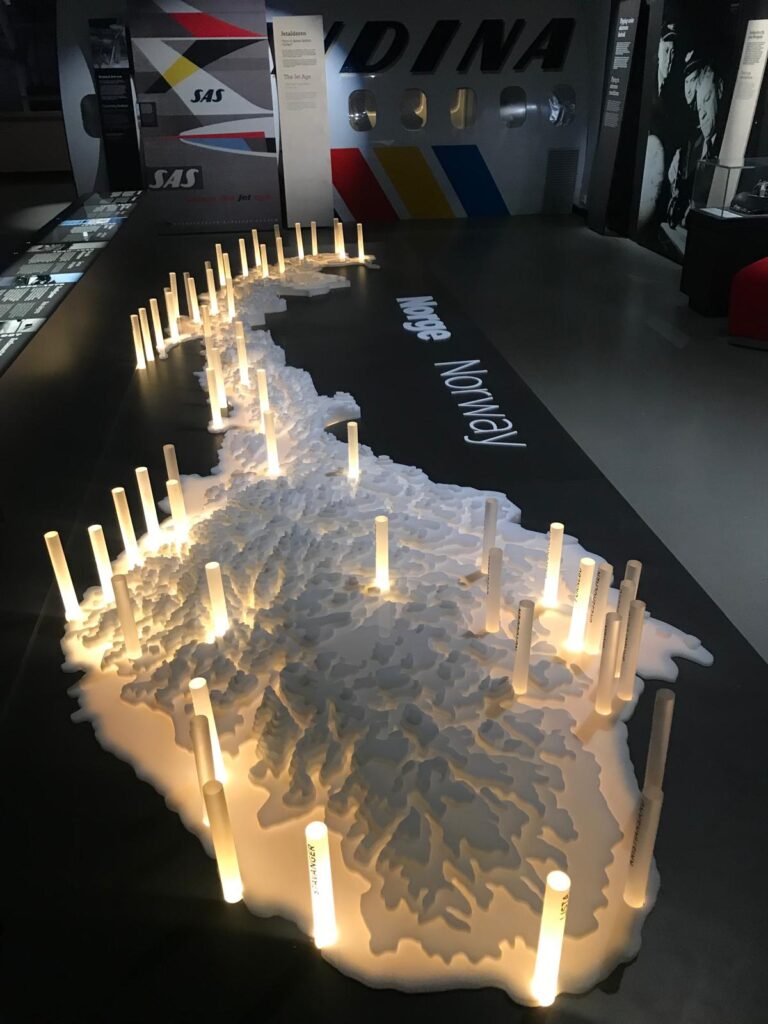
Norwegian airport topography – courtesy Bodo Museum
For those readers who have travelled within Norway, you will be familiar with the added bonus of often having to change aircraft to reach your final destination. Whilst not necessarily overly extravagant, this spotting trip includes 6 flights plus the opportunity for me to revisit several airports after a 20 year or more absence. Although not providing any new aircraft types to fly on, this trip does include two flights with Wideroe, a new airline for me and the opportunity to relax and savour once again that wonderful low frequency humming sound synonymous with turbo prop regional airliners.
From a challenge perspective the last few months have been somewhat beige in spotting terms, and whilst being vigilant and not without effort, I have failed to spot any new aircraft types since my visit to the IOM last November! Of interest though is that Bulgaria Air has become the latest airline to add the Airbus A220 to their Heathrow schedule and it is nice to see this type becoming increasingly more popular at the airport. This is an aircraft type that I have yet to fly on and I do hope to put this right as part of a spotting trip in 2024!
Friday 12th April: Sector 1 – 06:40 SK1530 to Stockholm
Having sighted the long line of incoming aircraft over West London, it does rather feel like any other workday commute to the “office” but fortuitously today I am game keeper turned poacher! Accustomed to Heathrow’s orbit at this hour and with nothing of particular interest on approach, my spotting buddy and log book scribe Mr. Jones and I quickly become immersed in pre spotting trip chit chat and speculating about what may lie ahead at Stockholm and Oslo airports.
Apart from the obvious joy of an extra spotting location on the way to Bodo, we agree that the addition of Stockholm provides the opportunity to indulge in a spotting trip “sub challenge”; to fly on at least one SAS aircraft registered in each of the 3 nations that formed the airline back in 1946.
With only 4 out of the 6 flights this weekend aboard SAS owned aircraft, this sub challenge could prove to be a tall order and it soon became a constant discussion point and matter of angst throughout the trip.
Our SAS Airbus A320 NEO to Stockholm today departs from Terminal 2 gate B37. I make specific reference to the use of B gates for our flight to Stockholm as an alert for those of you who maybe flying from Heathrow to Europe in the near future. A recent trend at Terminal 2 is for European flights to use B gates, requiring an additional 20 minutes airside time after clearing Security compared to flights departing from A gates. The same is true of Terminal 5 where British Airways is increasingly using both B and C gates for European and Domestic flights, adding not just to the length of time required airside but to the confusion that historically only long-haul flights departed from B and C gates.
As for the registration of our aircraft parked on the ramp in front of gate B37, we are disappointed to learn that it is EI-SIW, not a great omen for kicking off our sub challenge “accumulator”.
Today’s flight to Stockholm has less than 70 passengers which allows the consideration of moving seats after take-off to provide a better chance of spotting the DC-8-62 which I believe to be parked between airport buildings located south of runway 08/26. After introducing both myself and aviation spotting challenge to the cabin crew, they kindly agreed to take my printed airport map complete with location of the DC-8-62 to the flight deck to establish which runway would be using for arrival! The captain was most accommodating and kindly confirmed both runway and landing details, advising me to re-locate to the left-hand side of the aircraft and take up a vacant window seat.
After just 2 hours flight time and much anticipation, we landed as promised from the east, raced past an aircraft storage ramp and came to a halt almost adjacent to where DC-8-62 VP-BHM was parked. Only 67 units of this magnificent aircraft were manufactured and this specimen was originally delivered to United Airlines before ending its flying duties performing VIP Charters with Brisair of Switzerland.
The aforementioned storage area has several classic aircraft of note, not least SE.210 Caravelle III SE-DAI which happens to be the sole surviving example that can taxi using its own Rolls-Royce Avon turbo jet engines. Other aircraft on the storage ramp included Air Sweden MD82 SE-RJP, Saab 340 SE-KXJ of Air Leap and Nextjet Bae ATP SE-MAK. Former SE.210 resident SE-DAF has recently been moved to Finland where it will be restored and displayed in Finnair livery.


DC-8-62 VP-BHM
After disembarking we made our way past a Thai Airways Airbus A350 and headed airside to do some spotting, but not without first experiencing a heartbeat missing moment at Swedish Border Control. Bemused by the fact that I was travelling to Bodo via Oslo and Stockholm, the Swedish authorities were more than interested as to why I had included a side trip to Sweden. It took a full 15 minutes interrogation complete with the production of our itinerary and all spotting accessories to convince the authorities that Stockholm was just another innocent spotting location on our trip.
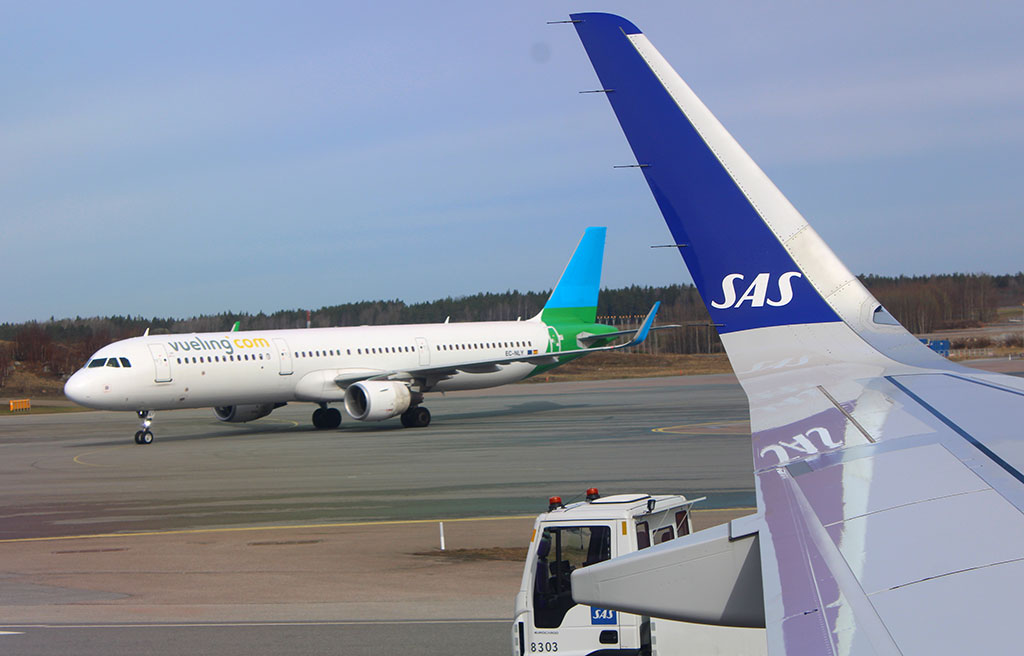
SAS A320 EI-SAW & Vueling A321 EC-NLY
Having burnt much precious time from our 90-minute stop over, we quickly exited Border Control and began our brief spotting mission by first visiting the Sky City viewing area. This “land side” vantage point provides access to the many aircraft deployed on domestic routes, including the Canadair Regional Jet and Embraer aircraft used by SAS and City Jet. Job done and very conscious of time, we moved to Departures and made our return airside via the very modern Security facility in Terminal 5.
Second fright of the day! The Security facilities at Stockholm are state of art and do not require the removal of electronic equipment or fluids from carry-on baggage. Smug in the knowledge that we could place all our belongings in the tray and waltz through the scanning equipment, Mr. Jones was shocked when he was pulled aside to explain what he had in his back pocket. Being old school, we still use pencil and paper to record our sightings and his log book complete with several years’ worth of entries was taken away for inspection. For a split second we feared the worst, but after a few minutes and several puzzled looks from the Security staff we were reunited with the log book and headed off for some additional spotting before moving on to Norway.
Our flight to Oslo was scheduled to depart from Terminal 5, so we located ourselves for the remaining 60 minutes of our stop over at Gate 10 which provides uninterrupted views of both landing and departing aircraft. Populair Fokker 50 SE-MHR was one of two such aircraft on the ground during our brief visit.

Having purposely not consulted any flight related internet applications to check the registration of our Oslo bound SAS aircraft; we were most pleased to learn that our steed for the second sector of the day would be SAS A319 OY-KBT, complete with full Star Alliance livery. We finally have an SAS Alliance registered aircraft and our spotting trip “sub challenge” remains alive and kicking, at least mathematically speaking. As with all our SAS flights taken in Scandinavia, we had the option of boarding and disembarking via an air bridge through the forward passenger door or via the ramp and air stairs to the rear. No prizes for guessing which route we took on each occasion!
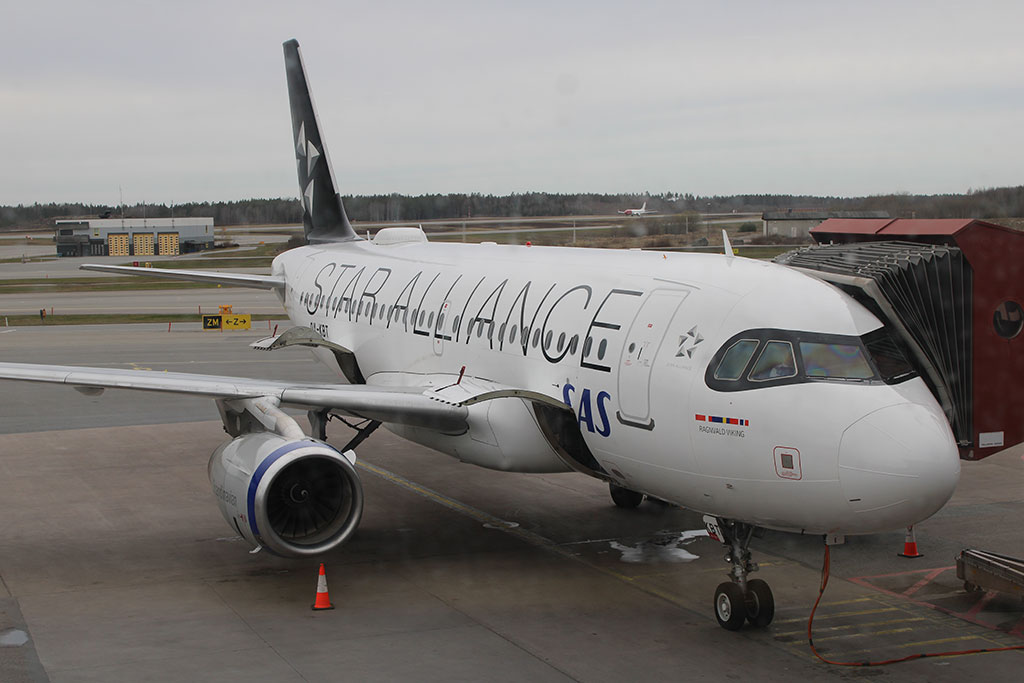
SAS A319 OY-KBT
Sector 2 – 12:15 SK495 to Oslo:
After a much-rushed spotting frenzy we depart for the 60-minute flight to Oslo but content in the knowledge that we had taken a good “nibble” in spotting terms out of the combined SAS and Norwegian Air Shuttle fleets. With a healthy number of SAS and Norwegian aircraft logged during our brief stopover, the final entry into our much-cherished log as we took off for Oslo was indeed not Scandinavian. This honour goes to permanent resident Boeing 747-200 N981JM which is now an airport hotel accommodating up to 76 guests across 33 rooms, including a double room located on the former flight deck. (www.jumbostay.se).
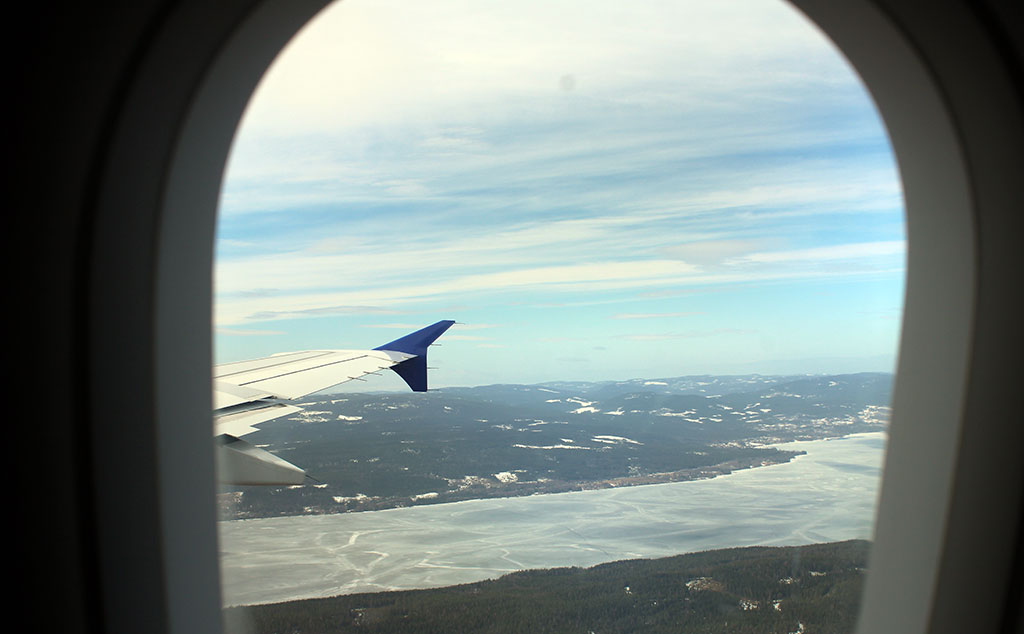
Oslo approach – frozen lake
As we taxied towards our stand it was clear that the “nibble” would soon become a sizeable “chunk”; we were confronted by an overwhelming sea of similarity as almost every stand was occupied by either an SAS or Norwegian liveried aircraft. I am not complaining as it was very much hoped that the multiple stop overs on this short spotting trip would allow us to log the vast majority of the SAS and Norwegian fleets in as little time as possible.

Having familiarised ourselves with the ramp geography and runway layout, we located ourselves at the western end of the Domestic pier. Looking northwards one has a perfect view across the parallel runways allowing us to log both landing and departing aircraft. This spotting point also provides close up views of visiting DAT ATR aircraft and movements to and from the cargo ramp. During the two-hour stopover an additional 50 Scandinavian airliners are added to the ever-growing registration count. An unexpected but most welcome visitor during our stay was RAF KC3 Voyager ZZ332.
There are currently 49 direct flights per week from Oslo to Bodo with our SAS flight scheduled to leave just 5 minutes after a Norwegian service to the same airport. Once again, we decided to use the ramp access and rear passenger door in order not to see the aircraft registration until approaching the air stairs. With much anticipation the aircraft’s registration revealed itself and our ride to Bodo is fortuitously aboard SAS A320 LN-RGL, leaving our Sunday evening flight from Stavanger to Heathrow in the hands of the gods if we are to fulfil our spotting trip sub challenge. Boarding from the rear also allowed me to take a photograph of DAT ATR 42 OY-JRJ, one of three such aircraft logged during our visit to Oslo airport.
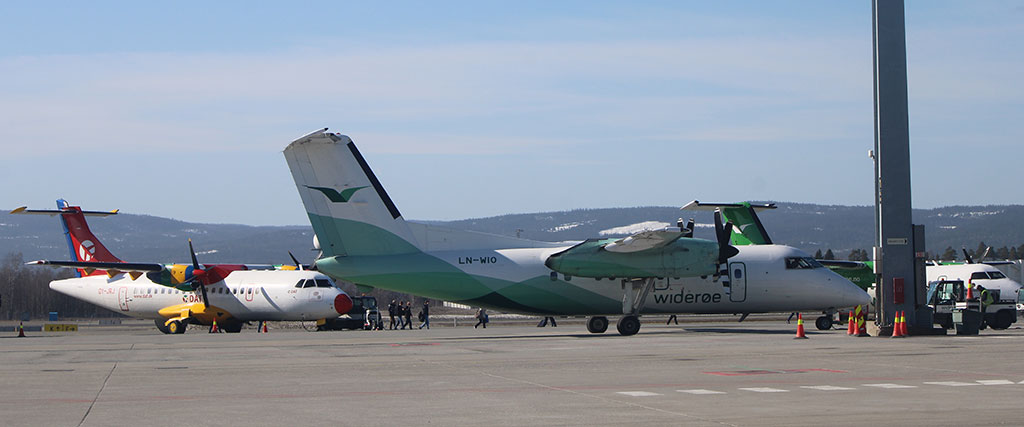
DAT ATR 42 OY-JRJ
Sector 3 – 15:35 SK4116 to Bodo
Not surprisingly our late Friday afternoon departure to Bodo is a full flight and after a short delay due to technical reasons the 75-minute flight passed seamlessly with nothing to see on route except cloud cover from horizon to horizon. Our aircraft landed from the west and being seated on the right-hand side one could see the extensive work being undertaken to demolish the former NATO hardened aircraft shelters located on the southern side of the airport.


Bodo is not a particularly busy airport but the small ramp felt crowded with four Wideroe DHC-8 Dash 200 aircraft and the aforementioned Norwegian Boeing 737 from Oslo all being prepared for departure. We disembarked via the rear passenger door onto the ramp and were greeted with the Bodo “Lufthavn” sign.
After 4 years on this spotting journey, I had finally reached the “Flame Rouge” and the finishing line complete with Fokker F28 was merely a stone’s throw away. The journey’s prize however, would have to wait until tomorrow. Not only was the museum closed at this time of day but we were looking forward to sampling Bodo’s night life and drinking a few local craft beers. Nowhere is too far from anywhere in Bodo, and like many of our fellow passengers from Oslo, we vacated the airport Terminal on foot and walked to our apartment in the centre of town.
Returning to our apartment at mid night after a most enjoyable evening drinking with the locals in the Piccadilly Bar, I took a quick glance at how the log book stacked up at the end of day one. With over 150 airliner entries I drift off to sleep in the knowledge that it was a most creditable registration haul given that we were never stationary for more than two hours at a time. Not forgetting too, that when arriving in Stockholm we very nearly fell at the first fence!
Saturday 13th April: Norwegian Aviation Museum Bodo:
After a hearty cooked breakfast and adorned in our best winter garb, we left the apartment, put our noses into the freezing Arctic wind and set off for the 1.5km walk to Bodo’s Aviation Museum. Never being too far from the airport in Bodo we spotted our first air ambulance service aircraft of the trip, King Air 200 LN-BSG departing over our heads no doubt on patient duty to a remote northern island community? The short walk took us through a snow-covered suburban park and we were soon greeted with the following tell-tale sight that we were close to our destination.
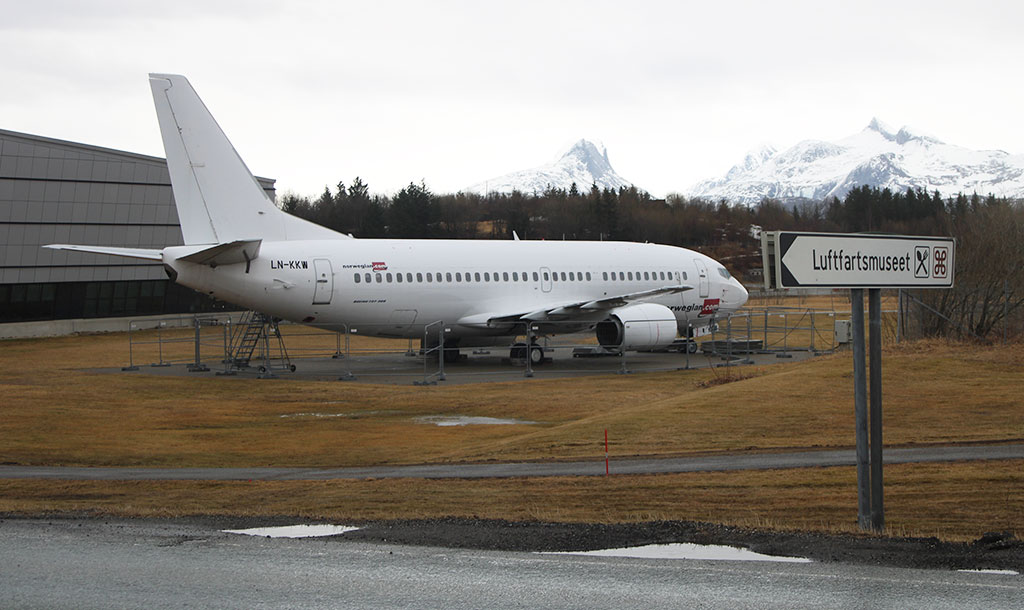
Former Norwegian Boeing 737 300 LN-KKW
At 67.9 degrees North, Bodo pips both the Pioneer Museum in Fairbanks and the Icelandic Aviation Museum in Akureyro to the accolade of being the most northerly aviation museum on the planet. No need to consult Stockley Park, the data speaks for itself and Bodo wins by a country, or shall I say, an Arctic mile.
Why, I hear you say, would anyone locate a national aviation museum in the Arctic? Actually, you would not be alone in this thought as Bodo’s nomination for the future Norwegian National Aviation Museum fuelled much debate throughout Norway with Oslo lobbying hard for the honour. However, during the late 1950s Bodo had withheld an aviation secret from the entire world that would eventually prove to be its trump card when the decision was finally made where to locate the museum. That secret will be revealed later when we meet the Lockheed U2 on display at the Museum.
Whilst the Fokker F28 is for me the undoubted confection of the day, there is much more to this museum and the aircraft collection amply illustrates Norway’s rich aviation history from early float plane operations to the jet age. The German occupation of Norway is strongly represented including aircraft on display that actually saw active service in the country, including several that took part in missions against British and Allied Naval vessels. The Museum also pays tribute to Norway’s contribution to the defence of NATO with a fine collection of Cold War fighter jets.
The civil aircraft types on display cover a number of types synonymous with linking remote communities along the coast and outlying islands to the larger population centres, including the indigenous single engine Honningstaad C5 Polar, truly one of a kind.
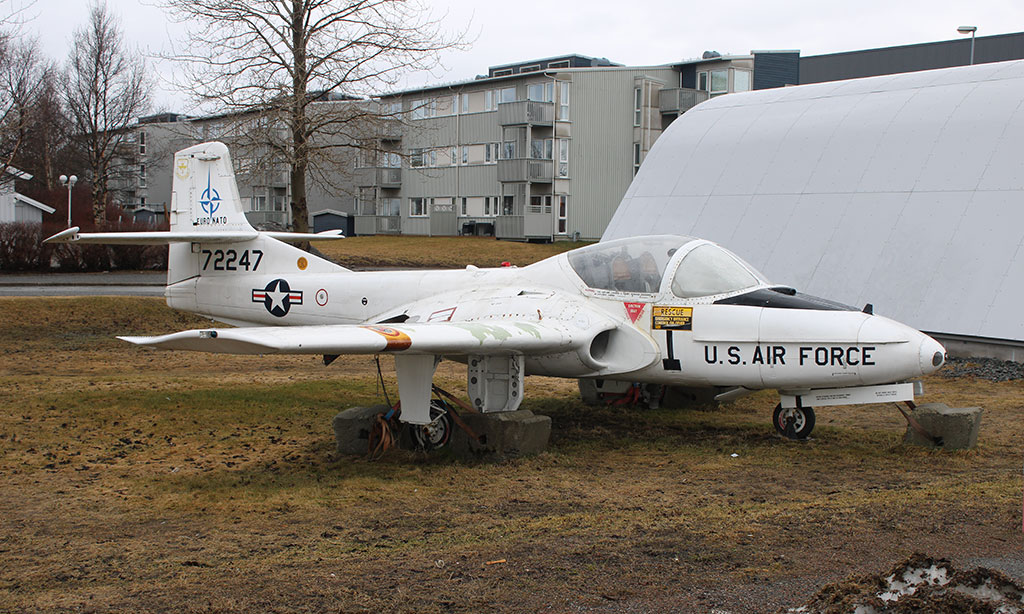
Cessna T-37 “Gate guardian”
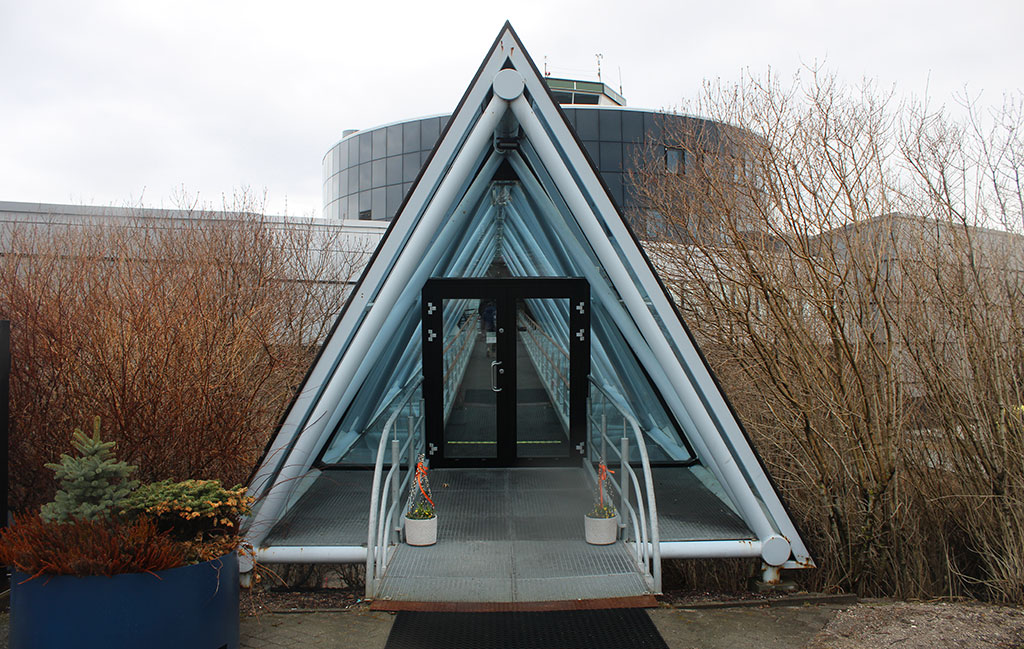
Norwegian National Aviation Museum Entrance
The museum is accessed via a triangular shaped walkway reminiscent of a popular Swiss chocolate bar after which one enters a very welcoming reception area complete with cloak room and complementary lockers, ideal for our winter coats and rucksacks. Leaving the reception area the building splits into two separate sections, one which showcases Norway’s Civil aviation history and the other Norway’s military history. The room connecting the 2 exhibition halls contains a magnificently presented former Norwegian Air Force F5, and access to Bodo’s former Control Tower! The calling of the F28 was irresistible and we headed straight for the Civil Aviation Hall.
I was fortunate to have flown on numerous KLM Fokker F28s between Heathrow and Rotterdam during the 1980s, so after 30 years of not seeing this type for real it felt as if I had been reunited with a long-lost friend. The last F28 I spotted at a UK airport was Royal Malaysia Air Force M28-01 at Heathrow back in the early 1990s.
Today’s example is LN-SUC complete with Braathens livery and is located in a corner of the exhibition hall with access to the interior of the aircraft via a ramp suitable for those with reduced mobility. The rear of aircraft interior is complete with eight rows of passenger seats, the forward five rows having been removed to accommodate an audio-visual exhibition arena showing continuous video footage taken at numerous Mediterranean airports during the 1970s. This alone is a spotters delight and it was most fitting to sit down on a classic jet airliner and see so many airlines and aircraft types that no longer grace our skies.
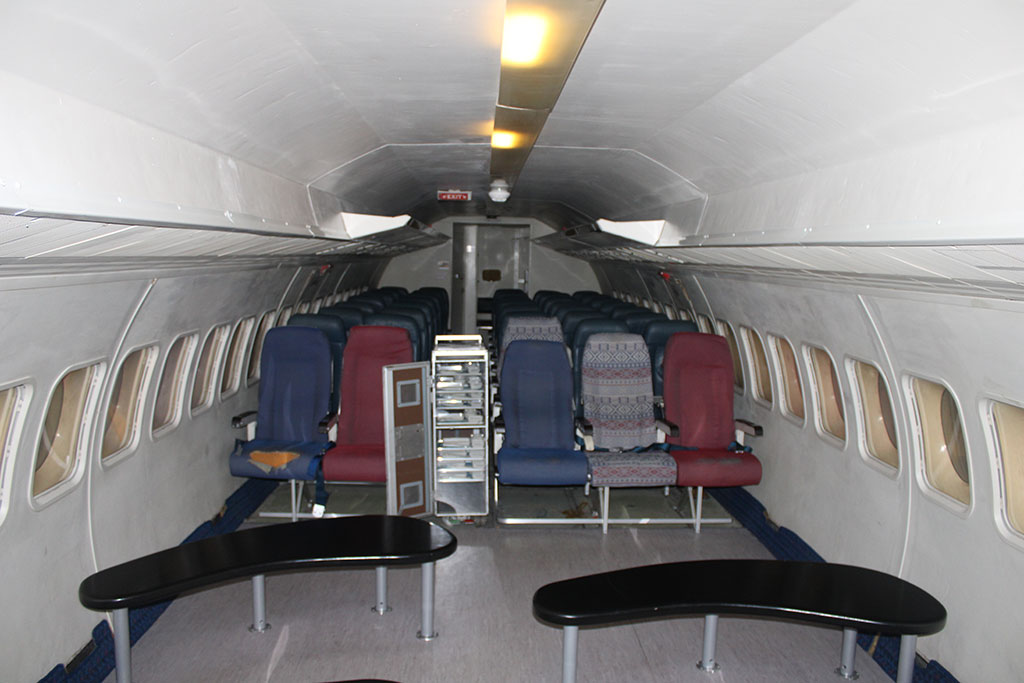
Braathens F28 Cabin interior
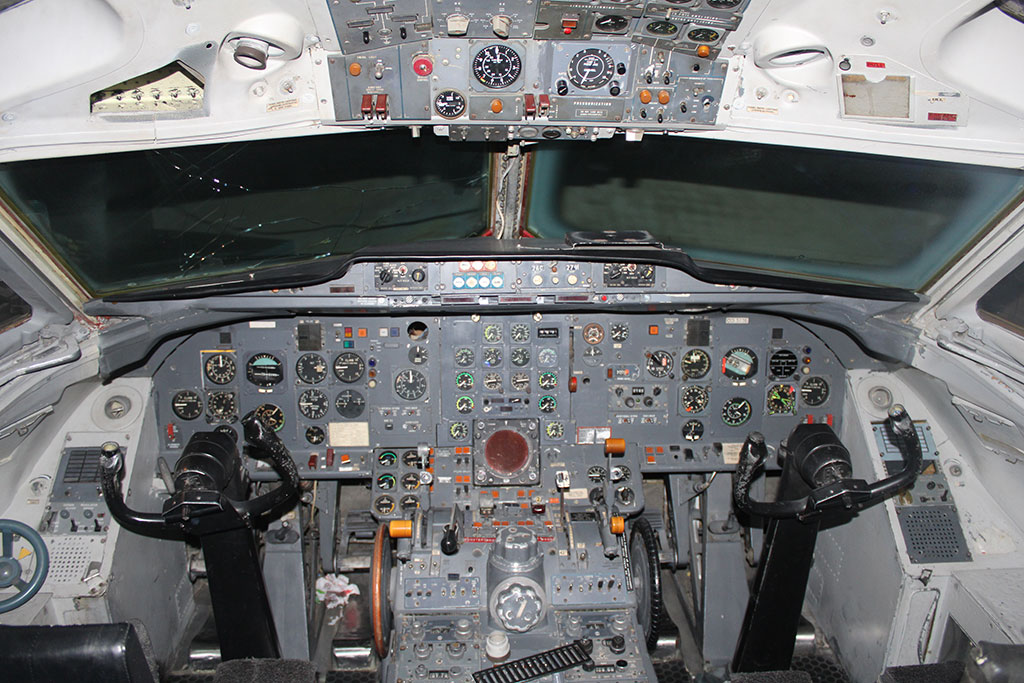
Braathens F28 Flight deck
Being wedged in to a corner and surrounded by many other exhibits both on the floor and hanging from the ceiling, taking a photograph of the Fokker F28 proved to be a sniper’s nightmare and it is impossible to take a clean shot of the aircraft. BN islander LN-MAF in the below photograph once served with Norving and was used not only for the carrying of passengers but often for delivering the “catch of the day” from remote fishing communities! There are reports that passengers often complained about the smell of fish after the aircraft had been reconfigured for passenger duties.
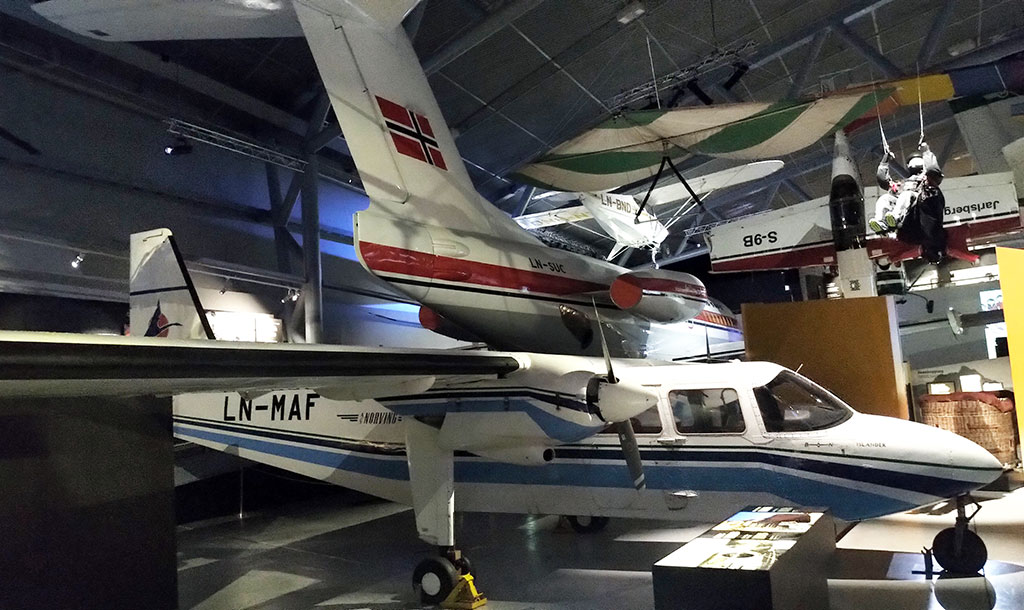
Braathens Fokker F28 LN-SUC & Norving BN 2A Islander
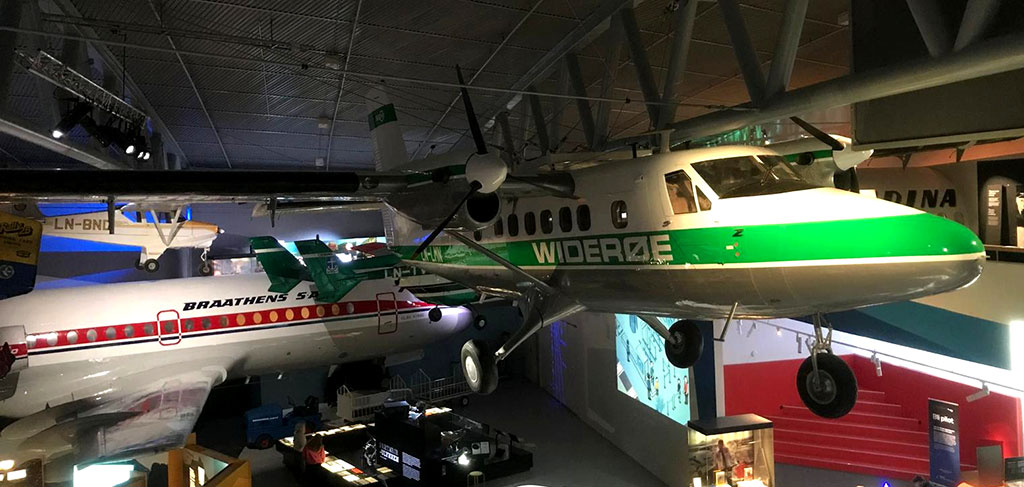
Wideroe DHC-6 Twin Otter LN-LMN
Not surprisingly the museum features a DHC-6 Twin Otter and their exhibit is LN-LMN in Wideroe livery, the type flew with the airline for more than 30 years and was eventually withdrawn from the fleet in 2000. The following eulogy can be found at the museum, a fitting accolade to the both the DHC-6 Twin Otter and the pilots that flew it throughout Norway’s rugged terrain;
It is said that if there was a storm,
first SAS would stop flying,
then Braathens.
Then the seagull would stop flying,
until finally a Twin Otter
might have to consider standing on the ground.
The Twin Otter followed in the footsteps of numerous other aircraft types that were specifically designed to operate in harsh remote environments, and the museum has both the Noorduyn Norseman and Honningstad C5 Polar on display. The C5 Polar design team started work on the aircraft in 1938 and included engineer Vigor Wideroe, but development was placed on hold during the German occupation of Norway and the part finished aircraft was hidden in a barn until the cessation of hostilities. This aircraft was the sole example built and flew throughout Norway from 1947 until it crashed into Bodo harbour in 1971.

Wideroe Honningstaad C5 Polar
The Junkers Ju52 never ceases to please when I see one, but this museum has created a rather splendid diorama to show case the important role that this aircraft performed in the development of Norwegian civil aviation. First entering service with Norwegian carrier DNL in 1935, the type remained in service with the airline until retirement in 1956 and the museum exhibit LN-DAF is complete with floats at rest on “water” moored to a pier. This setting is most impressive and truly shows off the versatility of what was Europe’s most manufactured transport aircraft during the 1930s.
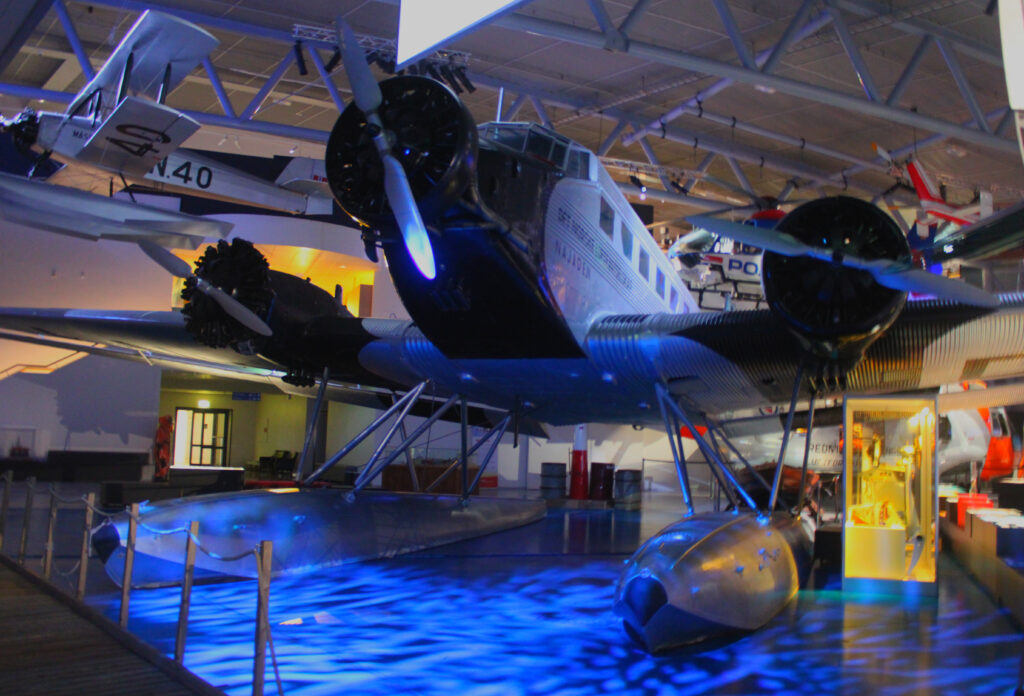
JU52 LN-DAF
On a sombre note, the Civil Aviation Hall also has an exhibition space dedicated to Partnair Convair 580 LN-PAA which crashed on route from Oslo to Hamburg in 1989 with the loss of all on board. The display space includes numerous aircraft parts recovered from the crash site. A history of using nonstandard parts during maintenance checks was established as the primary cause of the crash, after which many new aviation industry regulations were introduced worldwide from which we now benefit every time we take to the air.
Before moving on to the Military Exhibition Hall, we took time out and climbed the spiral staircase to access the former Bodo airport Control Tower which is now an integral part of the museum. The control tower is as complete as the day it was decommissioned, and a nice touch that will resonate with all spotters is the live audio feed from the current Control Tower which is located next to the main airport terminal building. We timed our ascent to the Control Tower to coincide with the departure of four Wideroe DHC-8 100/200 aircraft and visiting Challenger 65 N219QS, all of which were scheduled to depart within a 20-minute period.
The view across the airfield is magnificent with the many snow-covered mountain tops in the distance reminding us of just how far north we actually are today. We listened with intent to the exchanges made between the various aircraft and the control tower as each readied itself for departure. One by one the aircraft appeared from behind the terminal infrastructure and was cleared for take-off. What took us by surprise was the departure behaviour of each of the individual DHC-8 aircraft. On each occasion, all four Wideroe aircraft entered the runway midpoint and took off in the direction of their intended destination. Only the Challenger taxied to the end of the runway and took off into the prevailing wind before turning West on its long journey to Bangor Maine.
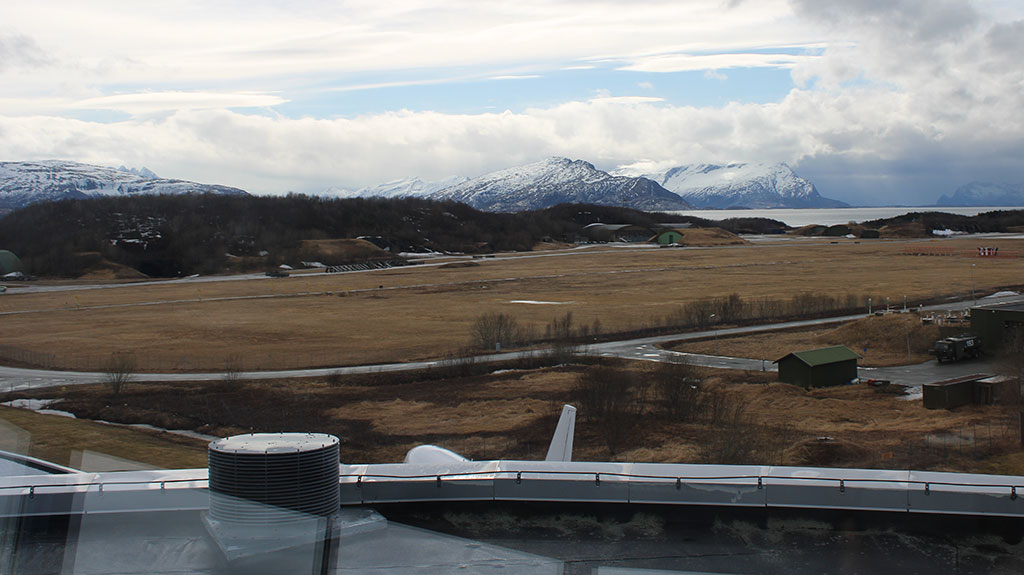
View from former Bodo Airport Control Tower
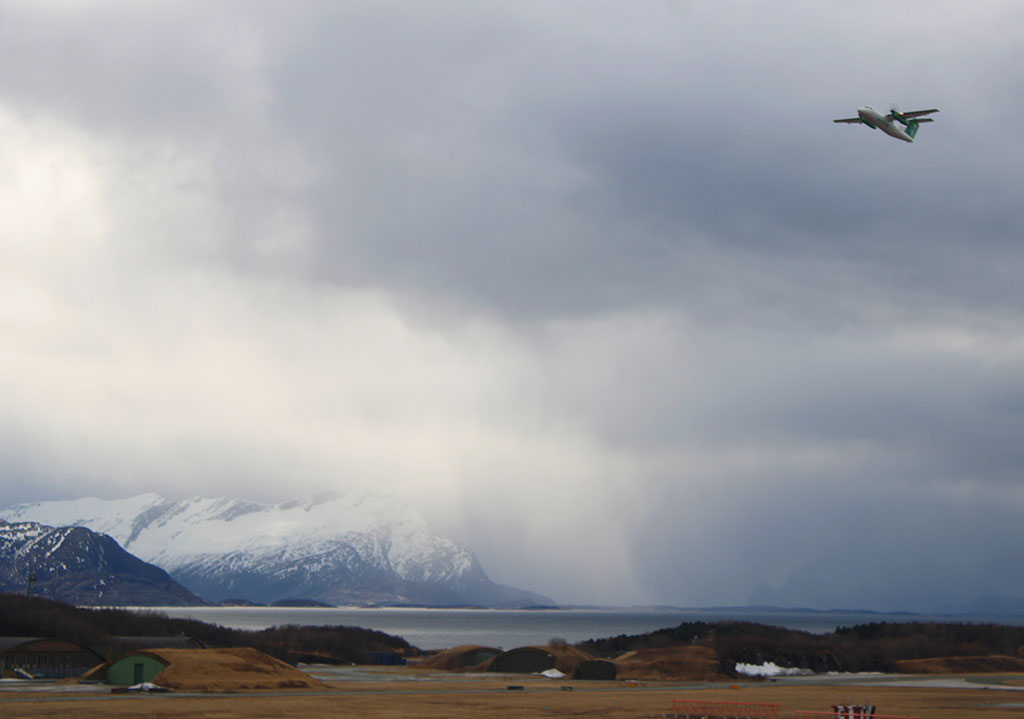
Wideroe Dash DHC-8 200 departing Bodo
After a very satisfying 30 minutes spent in the control tower we made our way to the Military Exhibition Hall. Upon entering the Hall, the left-hand corner from floor to ceiling is configured to look like a rugged “hill side” complete with mountain goat and wreckage of a crashed Junkers Ju-88. The aircraft ran out of fuel returning to base having attacked several Russian naval vessels and the exhibit is displayed exactly how it was found after crash landing in 1942.
As one moves through the Hall the exhibits are displayed along a virtual timeline starting with WW2 and ending with today’s Norwegian Air Force F16. The WW2 era aircraft each have their own intricate period ground settings, often with military transport vehicles and very realistic looking mechanical and flight crew.
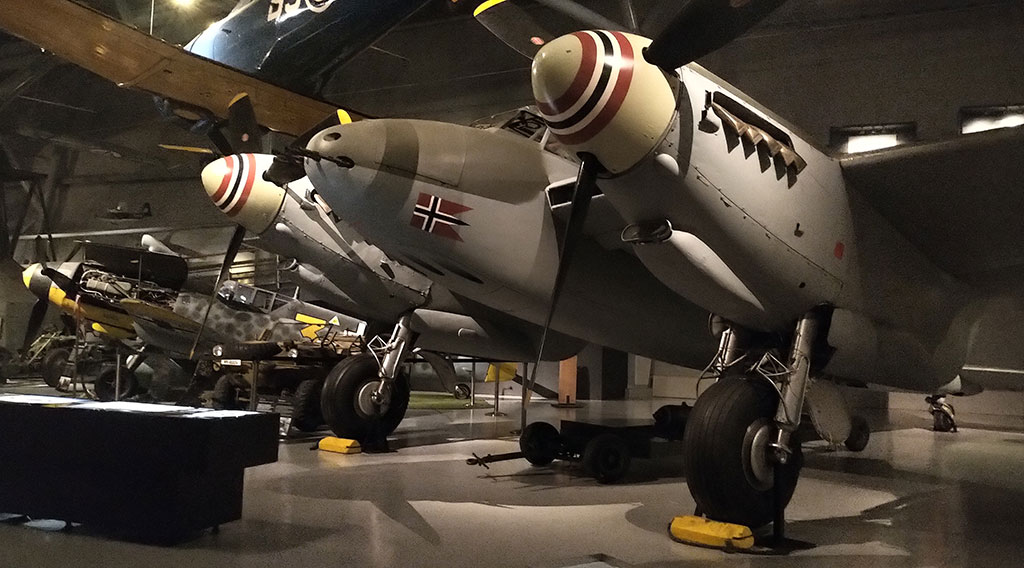
Norwegian Air Force Mosquito
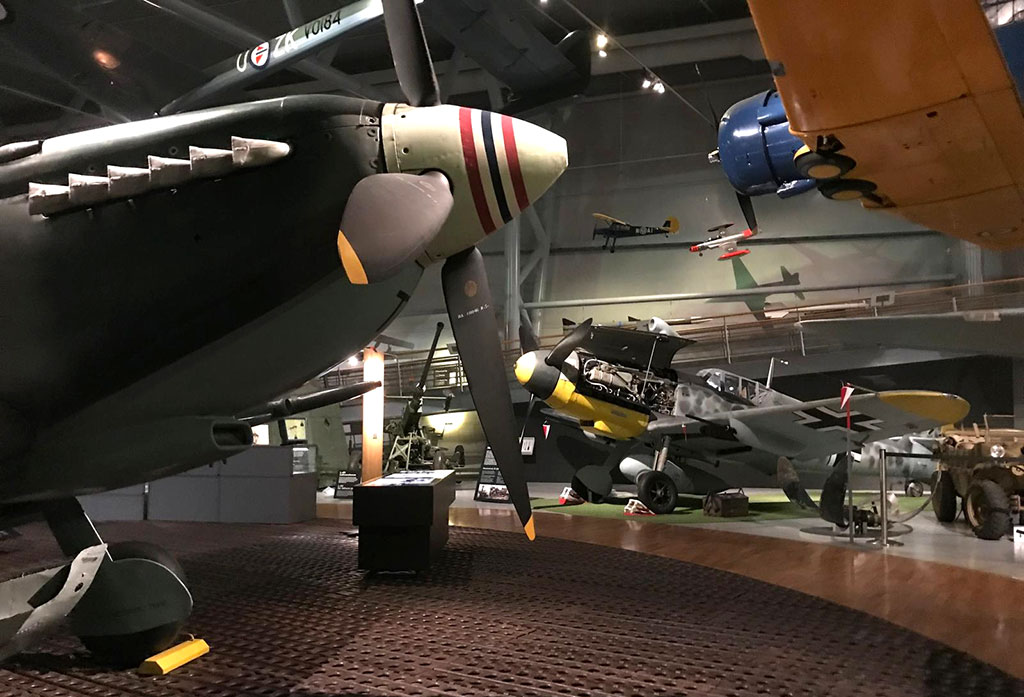
Norwegian Air Force Spitfire
Both the Mosquito and Spitfire look splendid in their respective 333 and 332 Norwegian Squadron colours. Norwegian Mosquitos were tasked with armed reconnaissance and anti-U Boat missions along the Norwegian coast during WW2, and the Spitfire on display was one of 36 of the type to return to Norway when the War ended in 1945. The Focke-Wolf 190 served with the Luftwaffe during WW2 and was based in Norway.
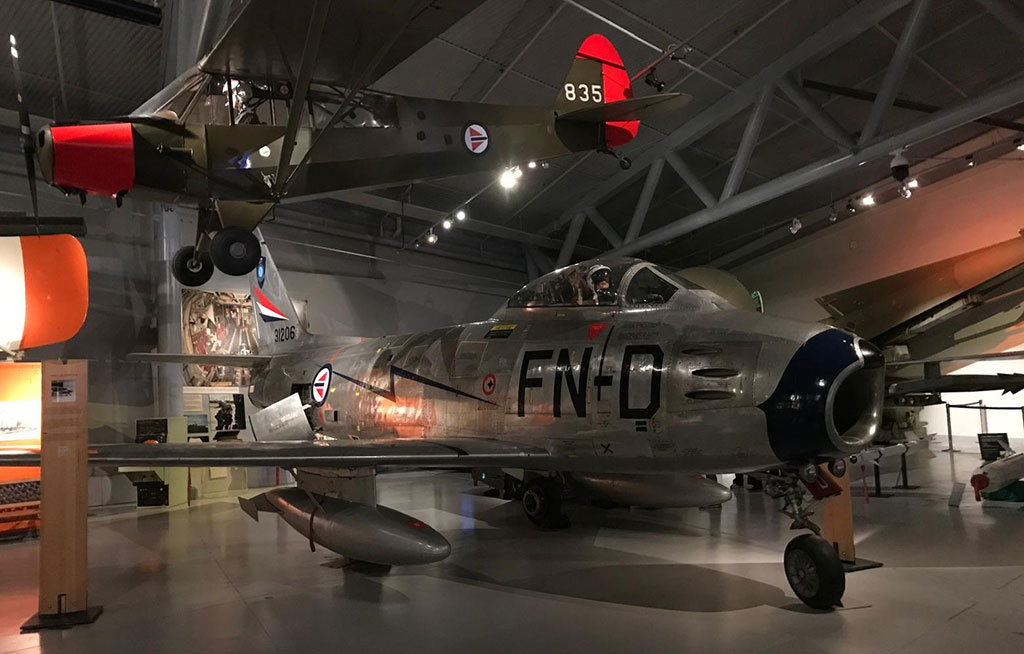
Norwegian Air Force F-86 Sabre
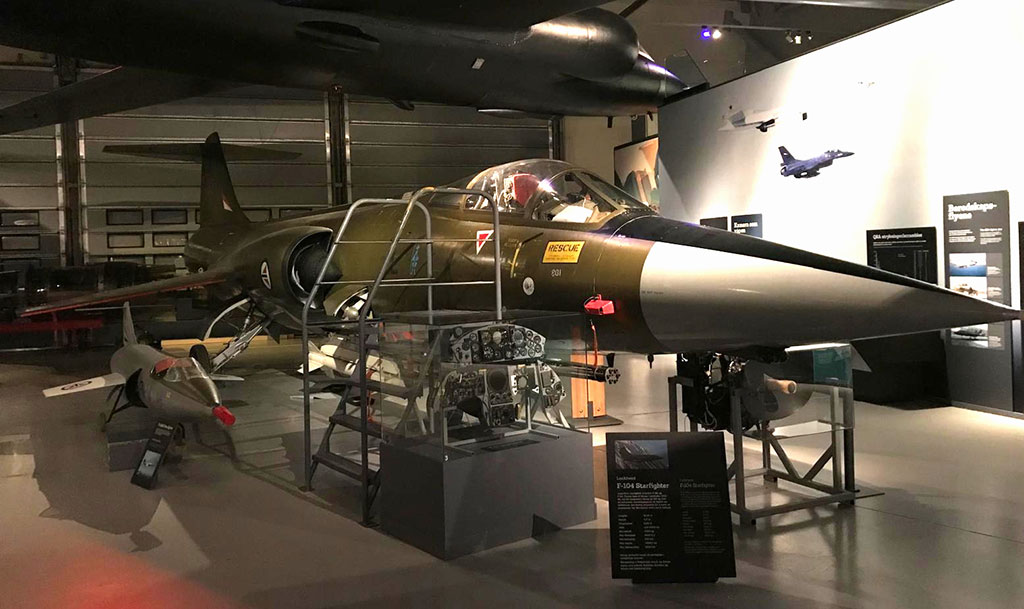
Norwegian Air Force F104 Starfighter
Moving on from the WW2 exhibits we enter the Cold War era and are confronted with such stalwarts as the Northrop F-5, Republic F-84 Thunderflash, North American F-86 Super Sabre, Lockheed F-104 Starfighter and Lockheed U2. The arrival in Bodo of 23 F-104 aircraft from the USA in 1963 must have been quite an occasion for this small coastal town and those that lived there. The aircraft neither flew in nor were they transported on vehicles to the airfield, they were towed from US Aircraft Carrier USS Croatan docked in Bodo harbour through the town streets directly to the air base. With Bodo being such a small town, I would like to think that Mr Jones and I walked along one if not more of the very same streets that those 23 F-104s slowly traversed 61 years ago?
Having finally met up with the Lockheed U2 exhibit it is time to reveal Bodo’s Cold War aviation secret. During the late 1950s the American CIA based numerous U2 aircraft at the airfield under the auspices of carrying out weather related data collection duties over the Arctic. The clandestine nature of the true use of the U2 aircraft was revealed on May 1, 1960 when the USSR shot down one of the Bodo based aircraft using the newly developed and previously unknown SA-2 surface air missile. The U2 had been designed to fly over enemy territory at a height of 70,000 feet in the belief that it was out of range of any USSR fighter aircraft and or anti-aircraft missile at the time.
Gary Powers, the American pilot of the ill-fated U2 thankfully survived the ordeal and the wreckage of his U2 complete with flight suit and helmet are on display at the Russian Central Armed Forces Museum. Powers was released 2 years later in Berlin as part of a “spy exchange” between the USA and the USSR. It was this episode of such global importance and Bodo’s ensuing decades long association with the Cold War that proved it to be the most logical choice for a new Norwegian National Aviation Museum.
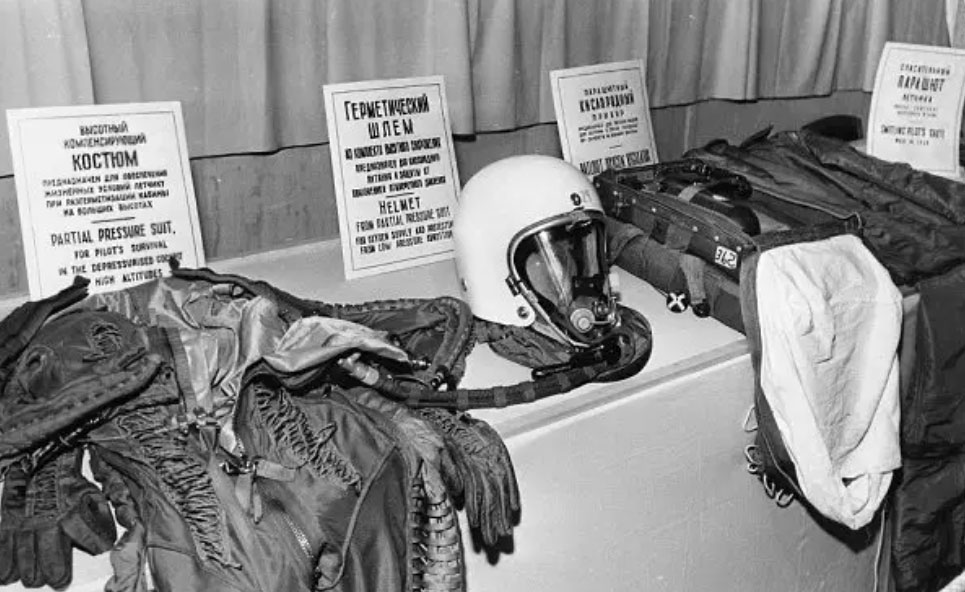
Gary Power’s belongings on display in Moscow
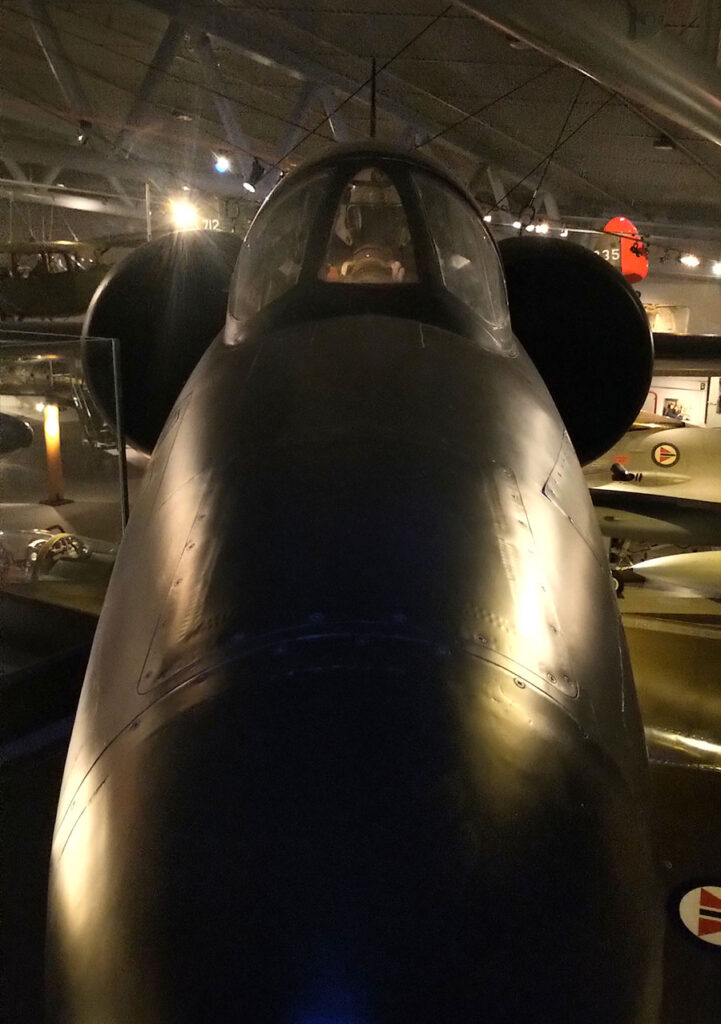
Lockheed U2 66953 at Bodo
Having now explored both Aviation Halls we headed back to the reception area for a coffee but first stopped off to visit the museum’s library. This is something that I have never witnessed at any other aviation museum, a speciality aviation library complete with an impressive collection of aircraft recognition books, magazines and encyclopaedias. Please ensure that you spend some time in the library should you visit the museum, it such a welcoming and rewarding place.
Sunday 14th April – Return to London Heathrow:
Sector one – Wideroe DHC-8 Q400 to Trondheim:
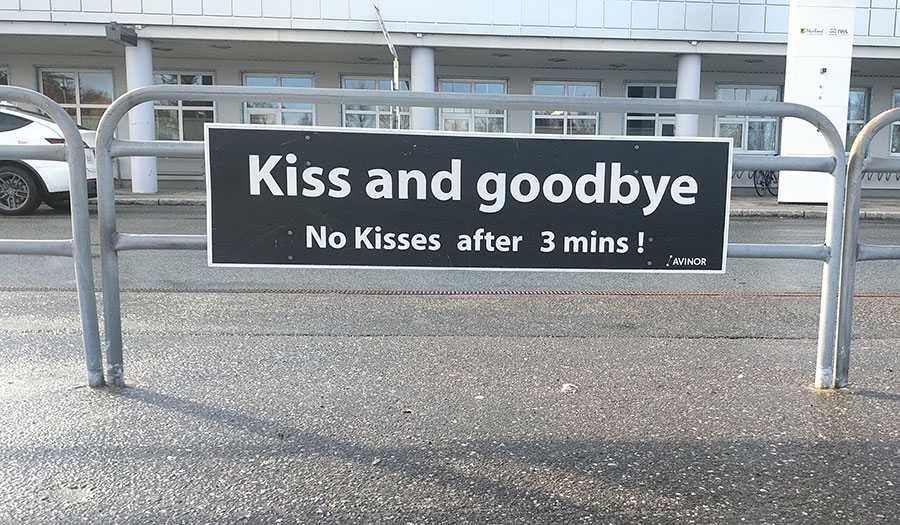
Bodo airport passenger “drop-off zone” signage
I must confess that I am rather sad to leave Bodo. Not only have I fulfilled a 4 yearlong ambition to spot a Fokker F28, but this small remote coastal town and its inhabitants have made us feel very welcome. It was most fitting to be greeted at the airport drop-off zone with signage that so encapsulates Norway. The mega airport authorities will be aghast with what I am about to say, but many could learn from this “human approach” when attempting to influence passenger behaviour! Rant over, I will miss Bodo.
The first of our three flight sectors today takes us from Bodo to Trondheim, a 60-minute flight aboard Wideroe DHC-8 Q400 LN-WDG. It is 6 years since I last flew on a Q400 (a return flight with Flybe from Heathrow to Edinburgh in 2018) and it feels good to be back aboard again. A neat little touch we observed when boarding today’s aircraft was the slightly raised “door mat” at the foot of the air stairs to encourage passengers to wipe their footwear before boarding.
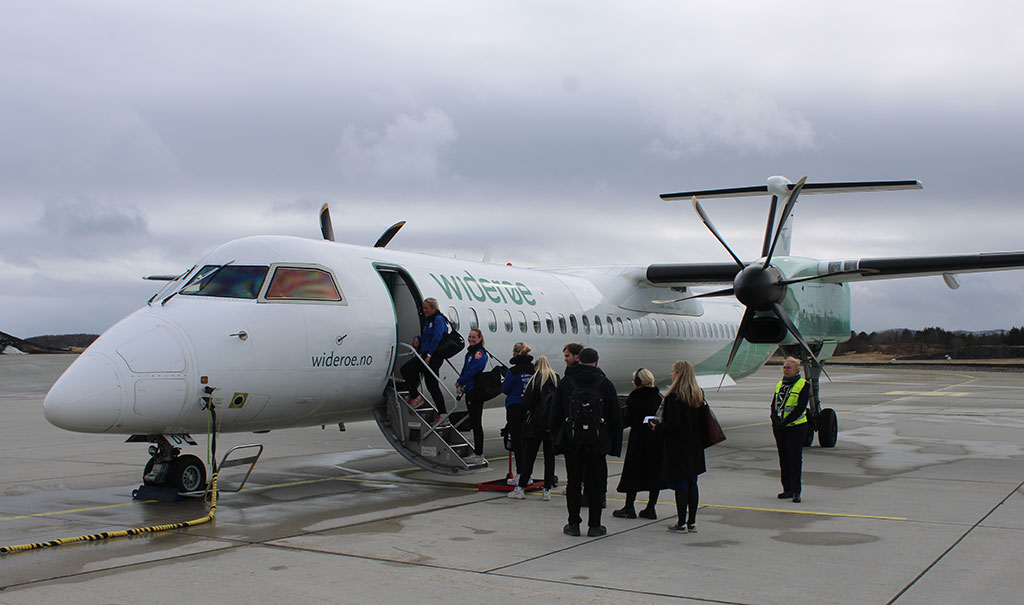
Wideroe DHC-8 Q400 boarding for flight to Trondheim
Having observed the departure behaviour of DHC-8 aircraft the previous day from our museum control tower vantage point, our aircraft predictably enters the runway at its mid-point, turns to face Trondheim, applies full gas and is airborne in a matter of seconds. Our aircraft was less than half full enabling us to move seats and take up a window position for the journey south, but unfortunately the weather was similar to our journey north from Oslo on Friday and there was very little to see other than clouds. Despite this, I was able to catch a brief glimpse of the local geography shortly after take-off and without doubt Northern Norway is one of the most magnificent places on planet earth.
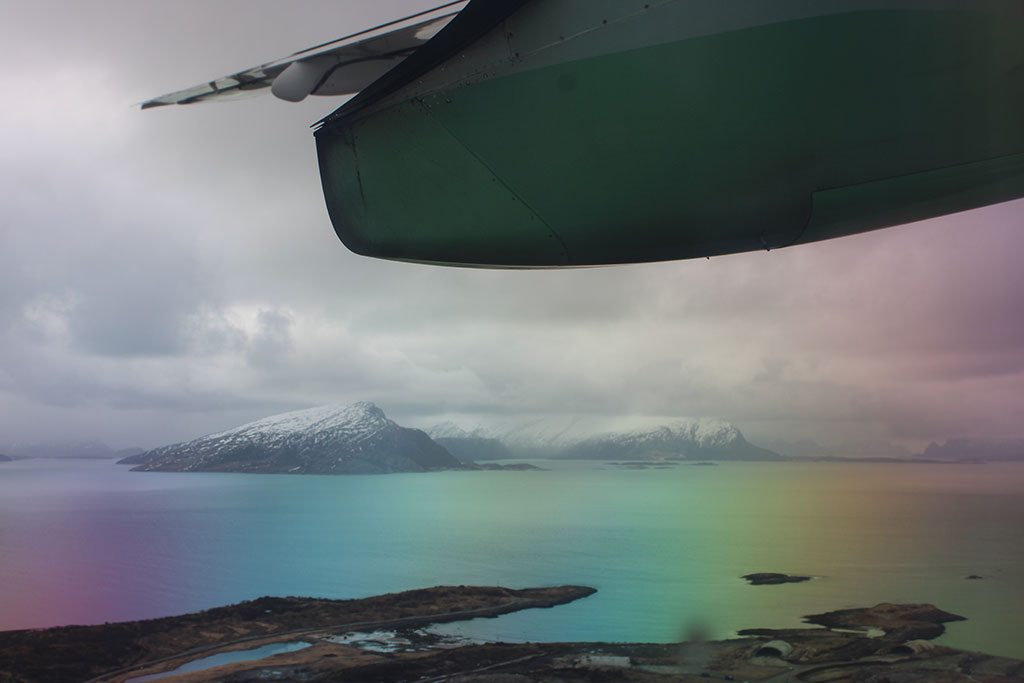
Bodo Bay after departure
Before we broke cloud cover for the decent into Trondheim airport the pilot dutifully warned us that there was a strong crosswind at lower levels and that it would be a very bumpy final few minutes before touch down. He certainly wasn’t joking. With both wings dipping in turn our aircraft slowly crabbed over the threshold, was quickly straightened up, slapped down with purpose, and brought to an almost immediate seatbelt-wrenching halt. All in a day’s work for a Wideroe pilot, and not a seagull to be seen!
The weather was truly awful as we disembarked our aircraft for the walk to the terminal but I would not have swapped this experience for any dry warm air bridge. Although horribly exposed to a cold wind blowing in from the North Sea, our short walk took us past a row of neatly parked Wideroe DHC-8 100/200 aircraft awaiting connecting passengers.
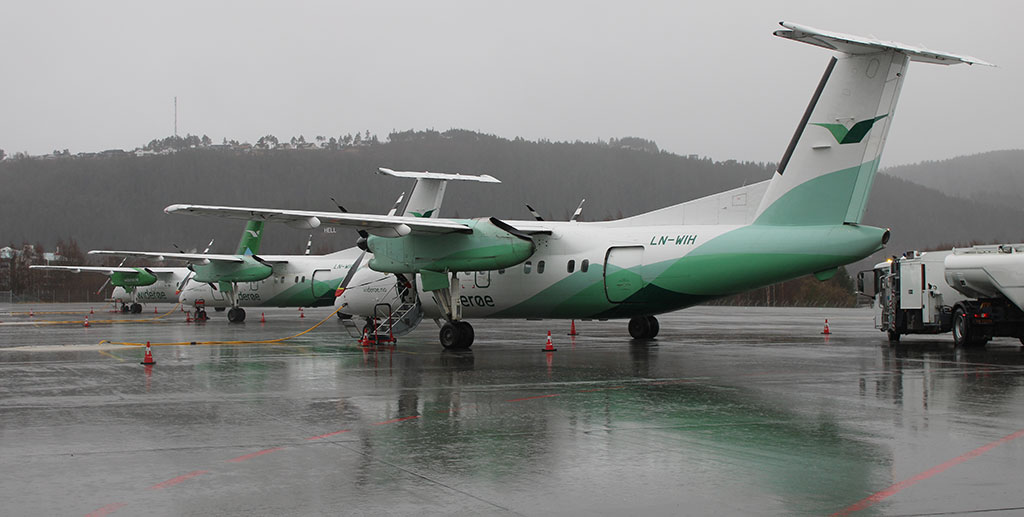
Wideroe DHC-8 100/200 line up at Trondheim
With only a short stop over between connecting flights, we did manage to snaffle up a few additional SAS and Wideroe aircraft and Trondheim provided several Avincis Emergency Service aircraft for the log book including Citation LN-SAA seen below departing for Oslo.
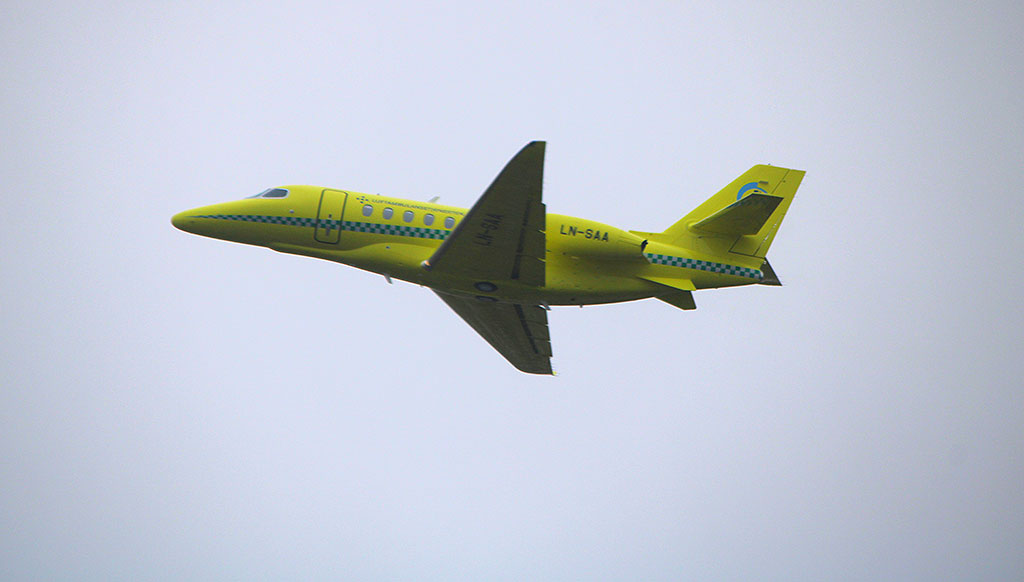
Avincis Citation Latitude LN-SAA

SAS Canadair CRJ 900 EI-FPR
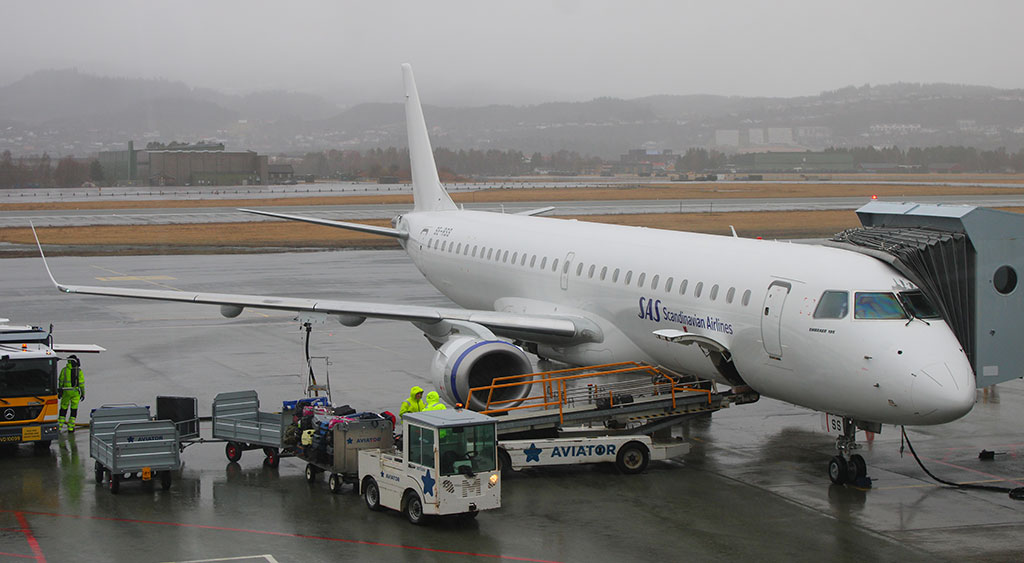
SAS Embraer 195 SE-RSS
Sector 2 – Wideroe DHC-8 Q400 to Stavanger:
Our second DHC-8 Q400 of the day conformed to the more formalised departure procedures of a larger airport and after a long taxi to the end of the runway we departed Trondheim in a more sedate manner than that employed previously at Bodo.
Although just a 60-minute flight south of Trondheim, the weather in Stavanger could not have been more different and we were greeted by clear blue skies. Upon arrival our aircraft parked up next to the non-Schengen terminal where we disembarked to wait for a coach to transport us to the Domestic terminal. Fortuitously we stood waiting for the coach with a full view of the helicopter terminal ramp and were able to add six CHC Helikopter Service Sikorsky S-92 aircraft to our log book. I had not spotted this type before and seeing so many parked together certainly was an unexpected bonus.


CHC Sikorsky S-92 LN-OQP
The change in weather fortune was most welcome as our first task after entering the Domestic terminal was to leave the airport and photograph Douglas DC-6 LN-SUB at the nearby Sola Aviation Museum. Although the museum is currently closed for renovation, the aircraft is proudly parked in front of the main exhibition hanger and easily photographed.
With just 2 hours before our flight to Heathrow, we ignored the international connection directions given to us upon entering the terminal and “broke out” of the airport to find a taxi driver who would be willing take us the short 3 km drive to the museum, wait 10 minutes and return us to the airport. It was a shame that the museum is temporarily closed, but in hindsight it was probably a good thing given the short stop over time in Stavanger. With the meter “running” I hastily photographed the splendid DC-6 and Rockwell Commander LN-LMD that was parked up at the far end of the visitor car park. Our driver gave me his details which I can share should any of you wish to undertake the same journey in the future.
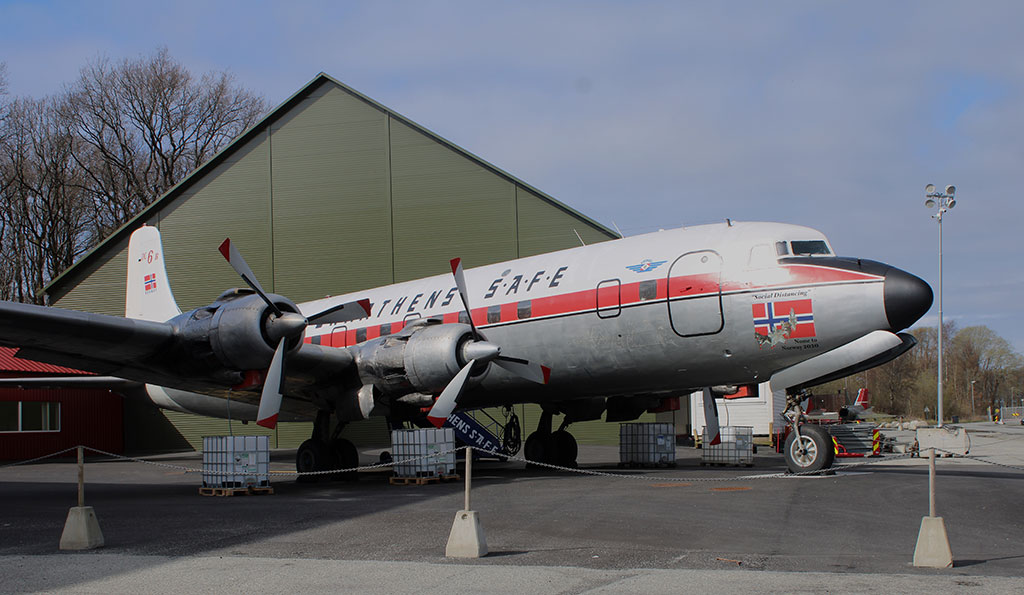
Braathens DC-6 LN-SUB
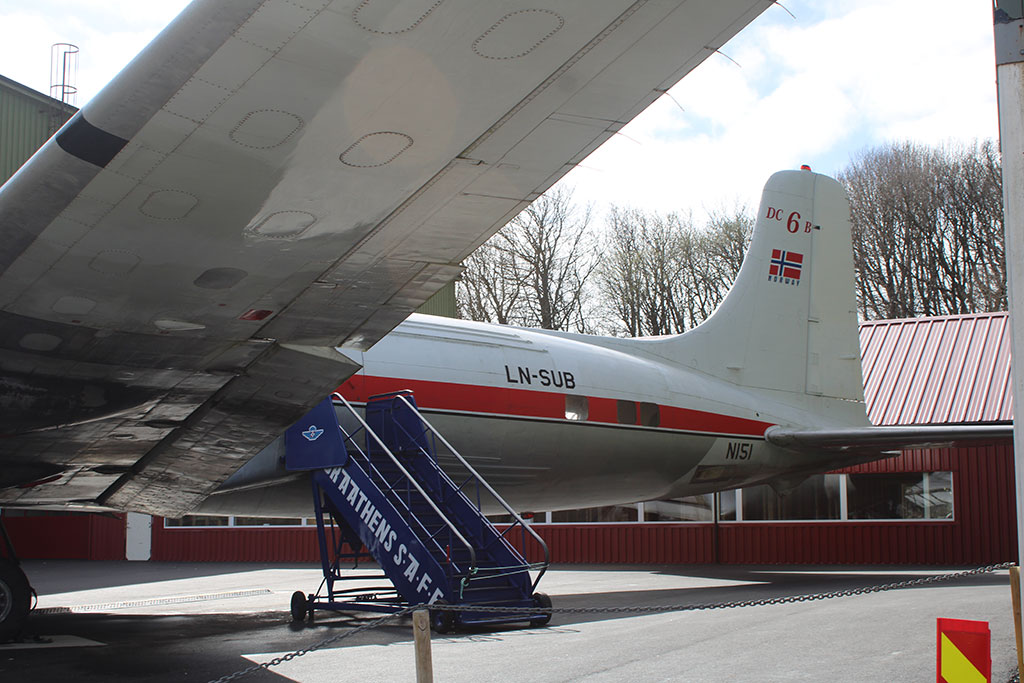
Braathens DC-6 N151
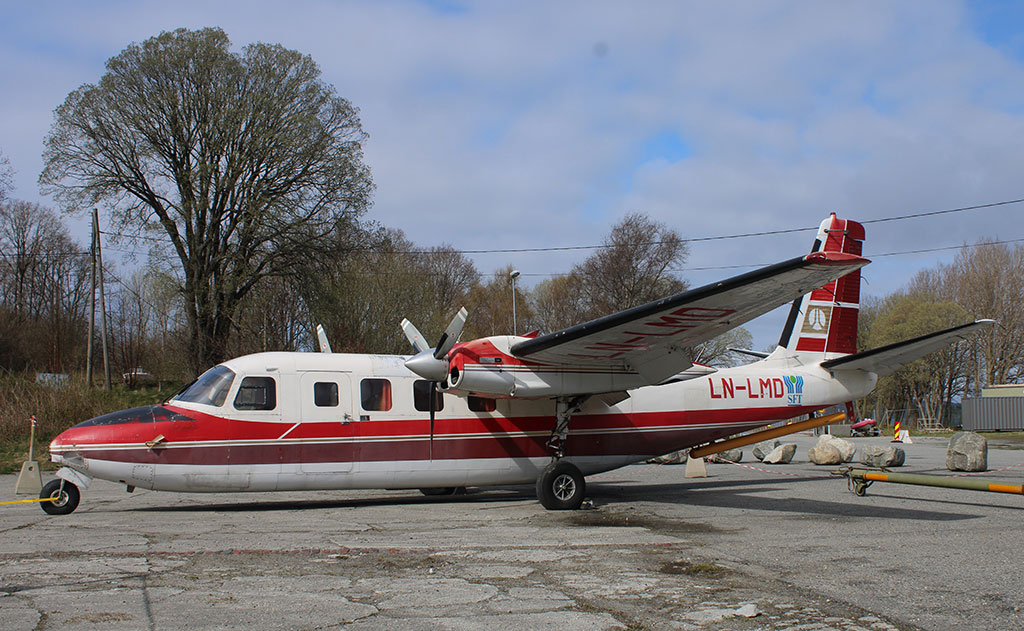
Rockwell Commander LN-LMD
Not only was the DC-6 needed as part of this ongoing challenge, but seeing this former DAT aircraft brought back fond memories of a spotting trip I made to Antwerp whilst on a camping tour of Europe during the summer of 1976. I spotted several DC-6 aircraft at Antwerp airport belong to DAT during my stay in the city but unfortunately not today’s aircraft, as that had left the fleet earlier in the year to join Conair in Canada.
Since leaving DAT this aircraft has had an illustrious career on the North American continent from fighting bush fires to delivering supplies to remote communities throughout Alaska. However, none of its previous “passengers” could have been more novel than those carried on its final flight to Norway in 2020!
The manifest for its final flight included husky dogs, all members of the world champion Norwegian winning dog sleigh team that had been stranded in Alaska since the outbreak of Covid. The below video recorded by Mikey McBryan of Buffalo Airways who not only provides a wonderfully detailed overview and insight into this unique flight, but manages to portray the magic of the event that I could never portray in words.
The beauty of this hobby is its unpredictability, and that truly showed itself today whilst waiting for our flight to Heathrow with SAS. From a spotting perspective I wasn’t sure that we would get much of a tune out of our brief stopovers when returning to Heathrow, but not only did Trondheim deliver – so did Stavanger. Whilst enjoying our final beer of the spotting trip we were blessed with the arrival of Maltese registered Falcon 10 9H-SSG from Alicante and Aerologic Boeing 777F D-AALU, the latter being an airline first for me. The large windows throughout the terminal overlook the ramp and are great for spotting, that is until the automatic sun blinds are lowered!
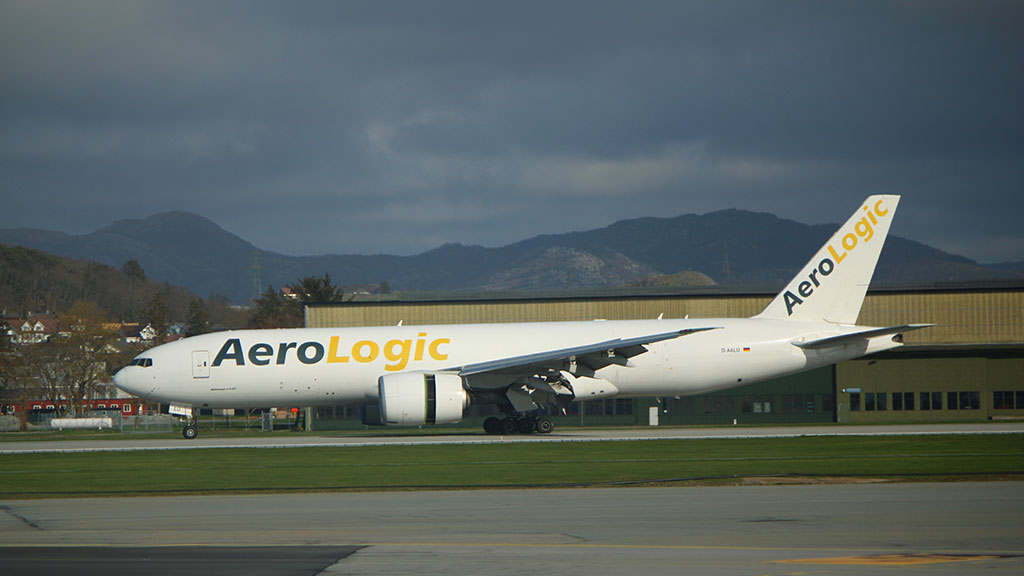
Aero Logic Boeing 777F D-AALU
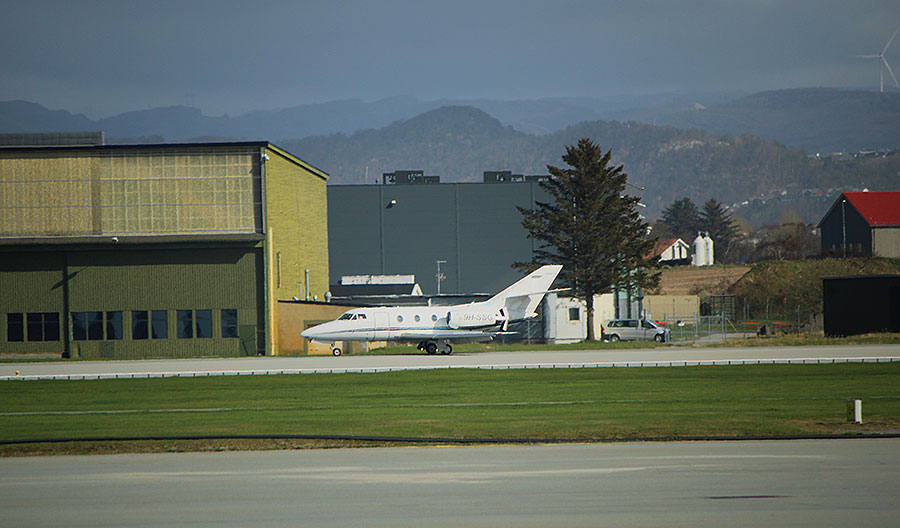
Falcon 10 9H-SSG

SAS Embraer 190 SE-RSP
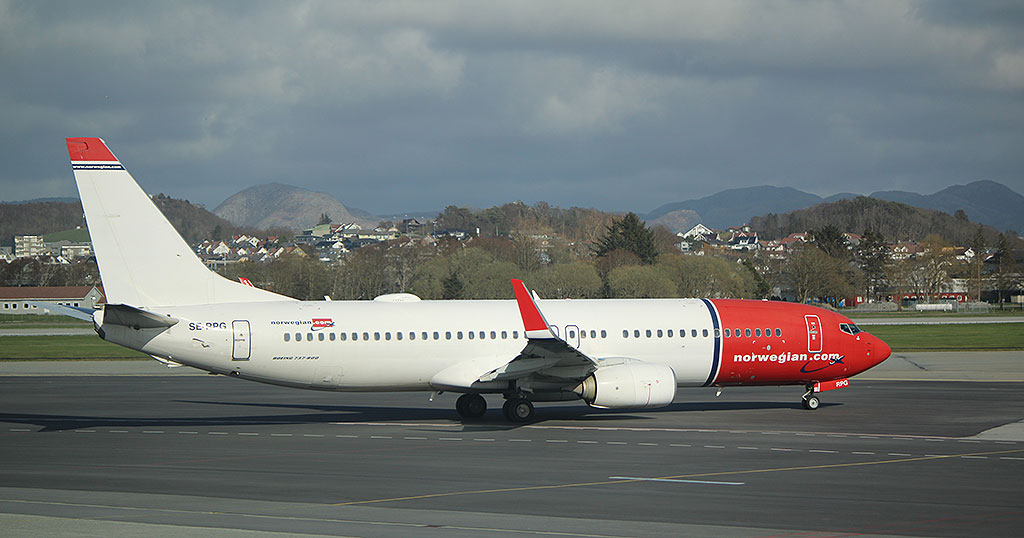
Norwegian Boeing 737 800 SE-RPG
At Stavanger we found another example of how the airports we visited in Norway employ the “human touch” to connect with their passengers. Close to the SAS North Sea Lounge there is a large wall that is covered with random words printed on magnetic wooden plaques. Passengers are encouraged to break their pre-flight boredom by creating private “messages” that can be shared before departure. Mr. Jones could not resist this novel adventure and I caught a message that he had posted for his partner; one assumes she knows what it means!

Sector 3: 17:50 – SK4627 to Heathrow:
Cue the goose bumps; it was time for us to board our last SAS flight of this trip and discover whether or not we would achieve our spotting trip “sub challenge”. With angst levels peaking we hesitantly walked across the ramp towards the rear of our SAS A320 in complete ignorance of the aircraft’s registration. A glance to the left revealed that our A320 for this flight was indeed of Swedish heritage, mission accomplished.

Mission accomplished! SAS A320 SE-ROY
Conclusion
From a spotting perspective our brief zig zag across Scandinavia to Bodo and back very much delivered what we had anticipated during our preflight chit chat upon arrival at Heathrow several days earlier. With regards to the driving force behind these spotting trips, I was successful in removing the Fokker F28, Douglas DC-6, DC-8-62 and DC-9-41 (fuselage section at Bodo Museum) from the challenge list. From an airline spotting perspective, the short stop over at both Stockholm and Oslo allowed us to chalk up a large number of SAS and Norwegian aircraft in a very short and enjoyable time frame. Let us not forget that we were also blessed with two Fokker 50 aircraft belonging to Populair, a new airline spot for the both of us.
The “sub challenge” most certainly added to the weekend’s enjoyment and kept us speculating about the outcome right up to the last moment of the trip. It truly felt like we were rolling a dice each time we boarded one of our four SAS flights.
As for the greater spotting challenge that I have set myself? The list continues to dwindle but I will leave you with a line taken from a song written by a famous Irish rock band of the same name as the American “spy plane” on exhibition in Bodo;
“But I still haven’t found what I’m looking for”.
To be continued.
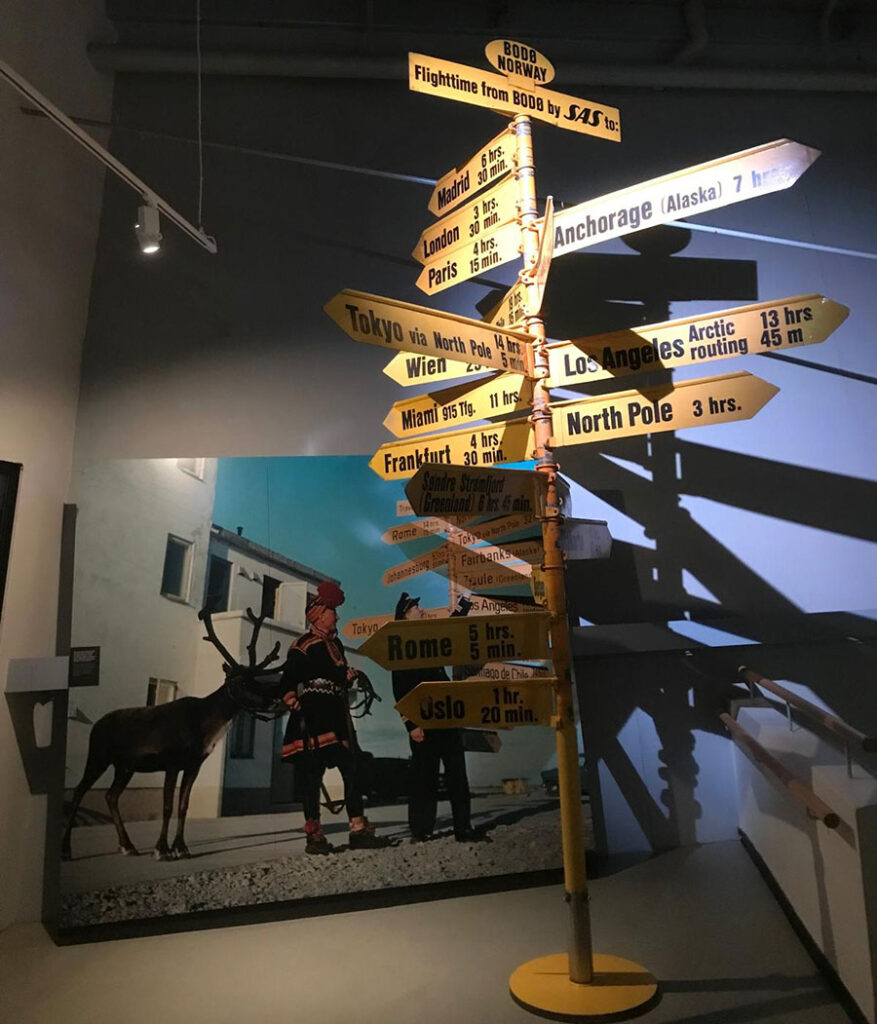
Destination flying times from Bodo





2 comments
Great story! The aviation museum in Bodo is a fascinating place. I was there 10 years ago. I enjoyed reading about your transits through ARN, OSL, TRD, and SVG too. A great trip for a spotter.
If you had book a trip to Athens you would see also almost 2 hours Hellenic Air Force Airshow in Faliro.
https://www.youtube.com/watch?v=YSzFcmVpo8I&list=PLHl-YddLVLNdgqMuUXRsitUtcPuLZHk-Y